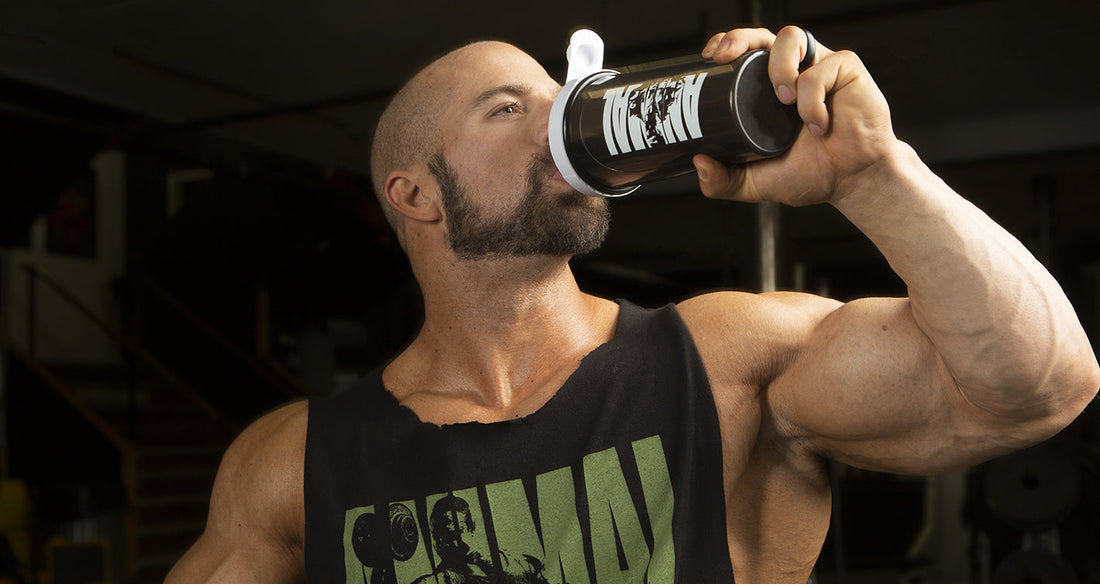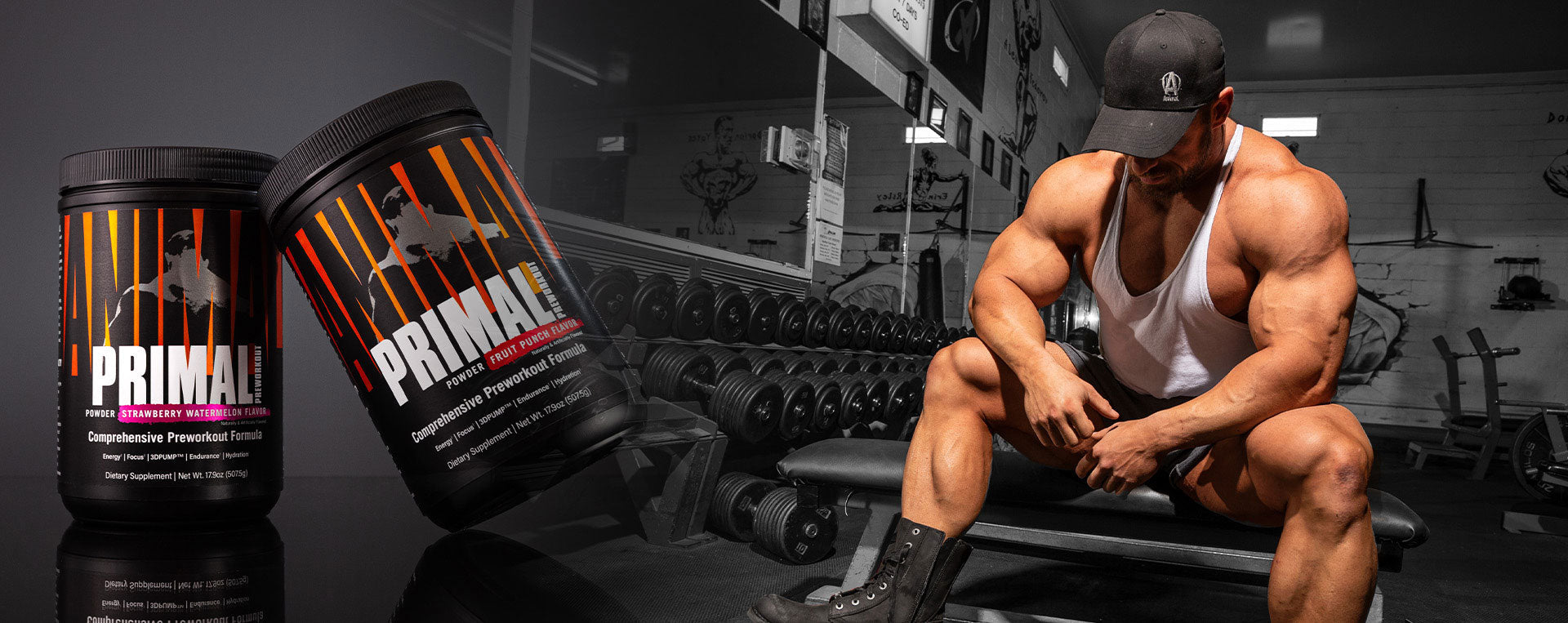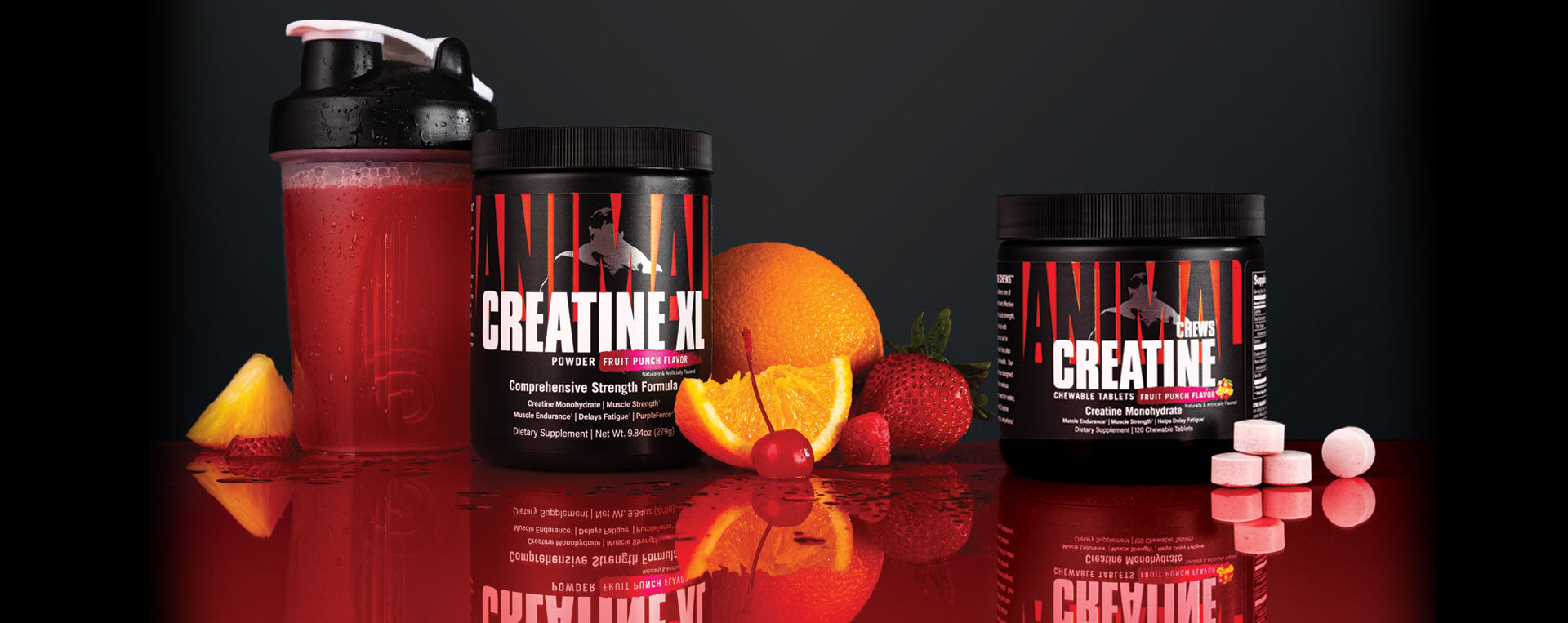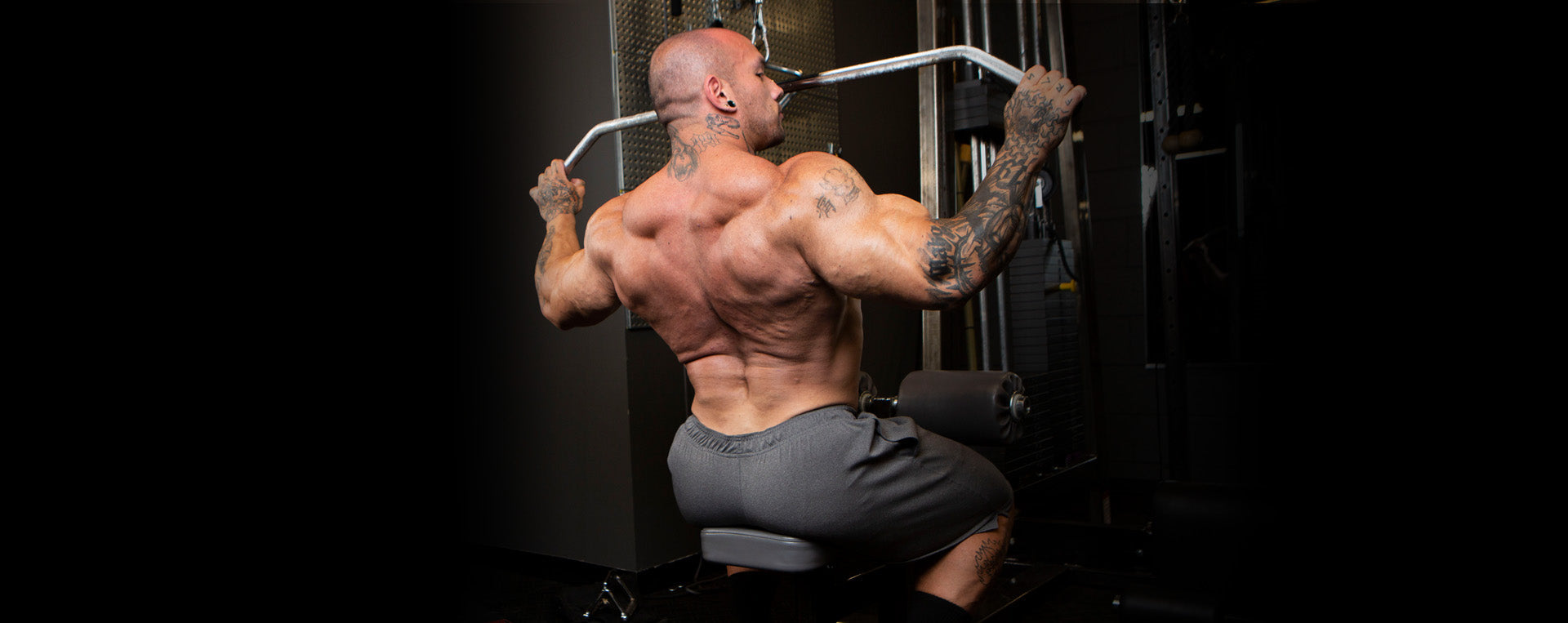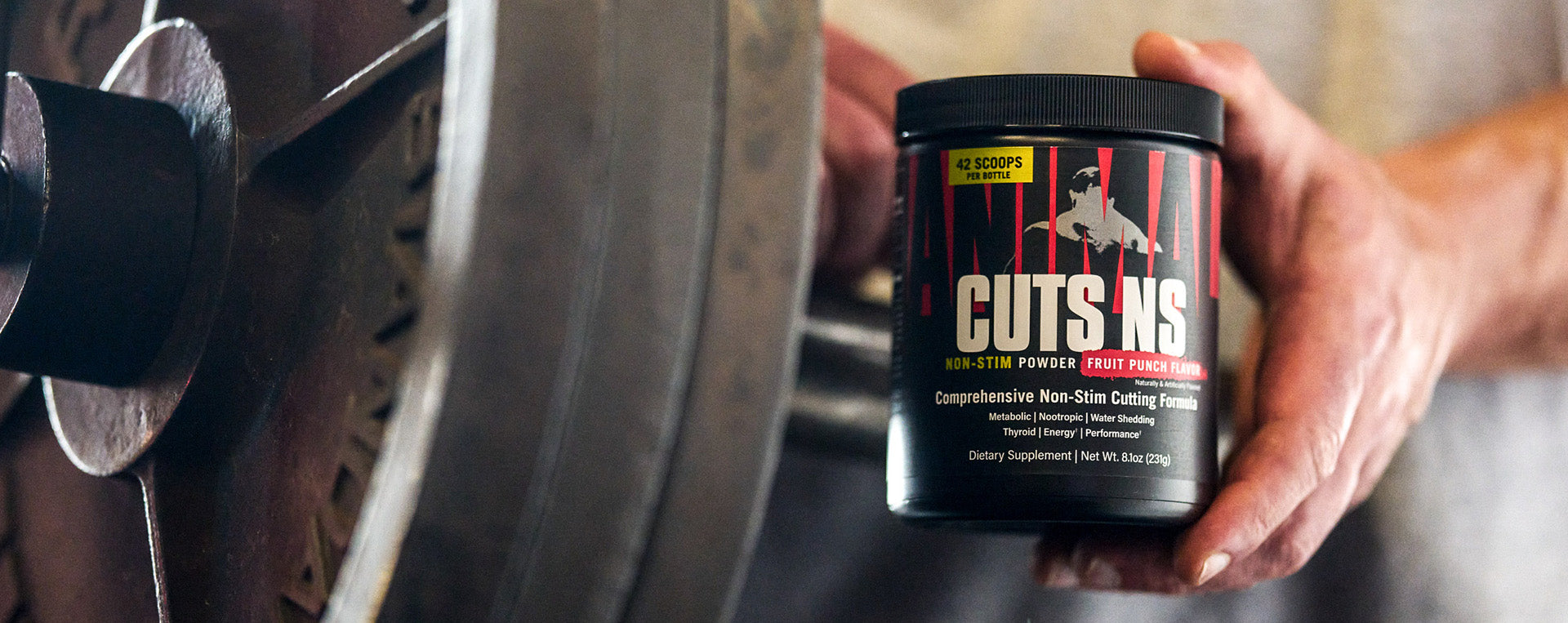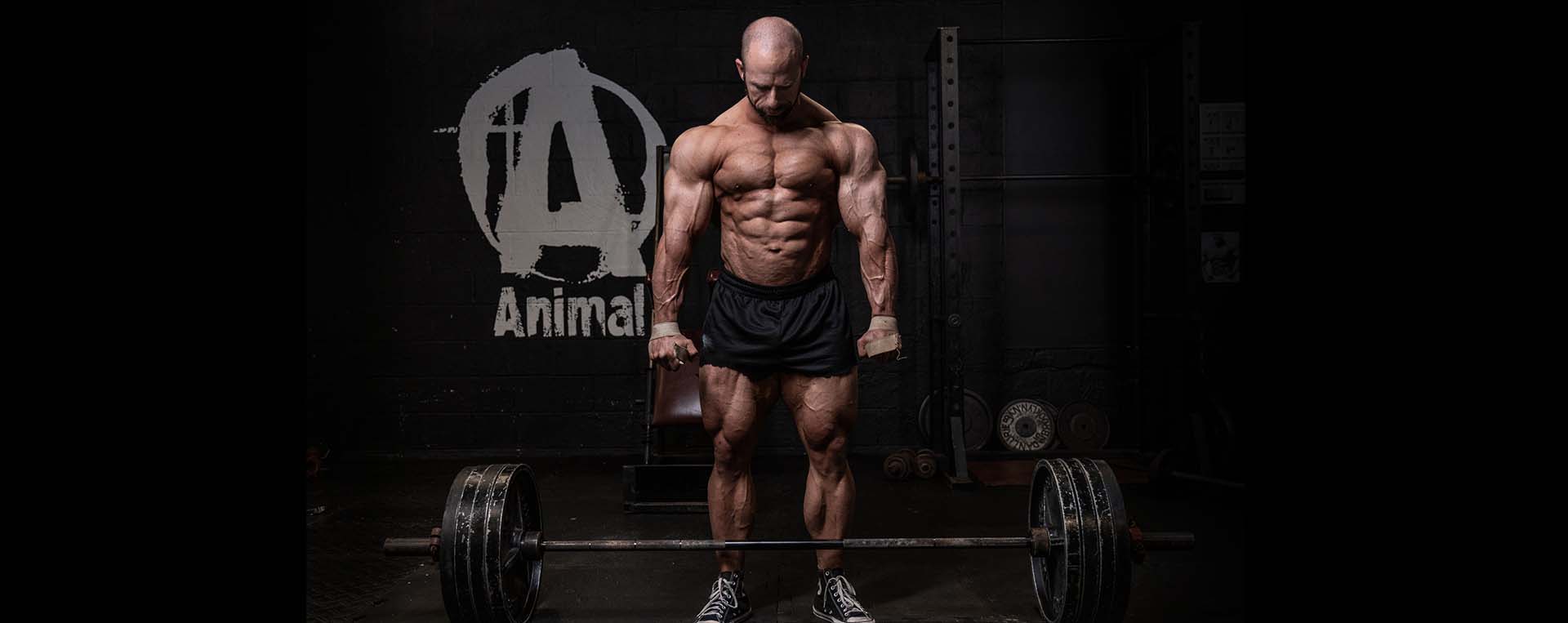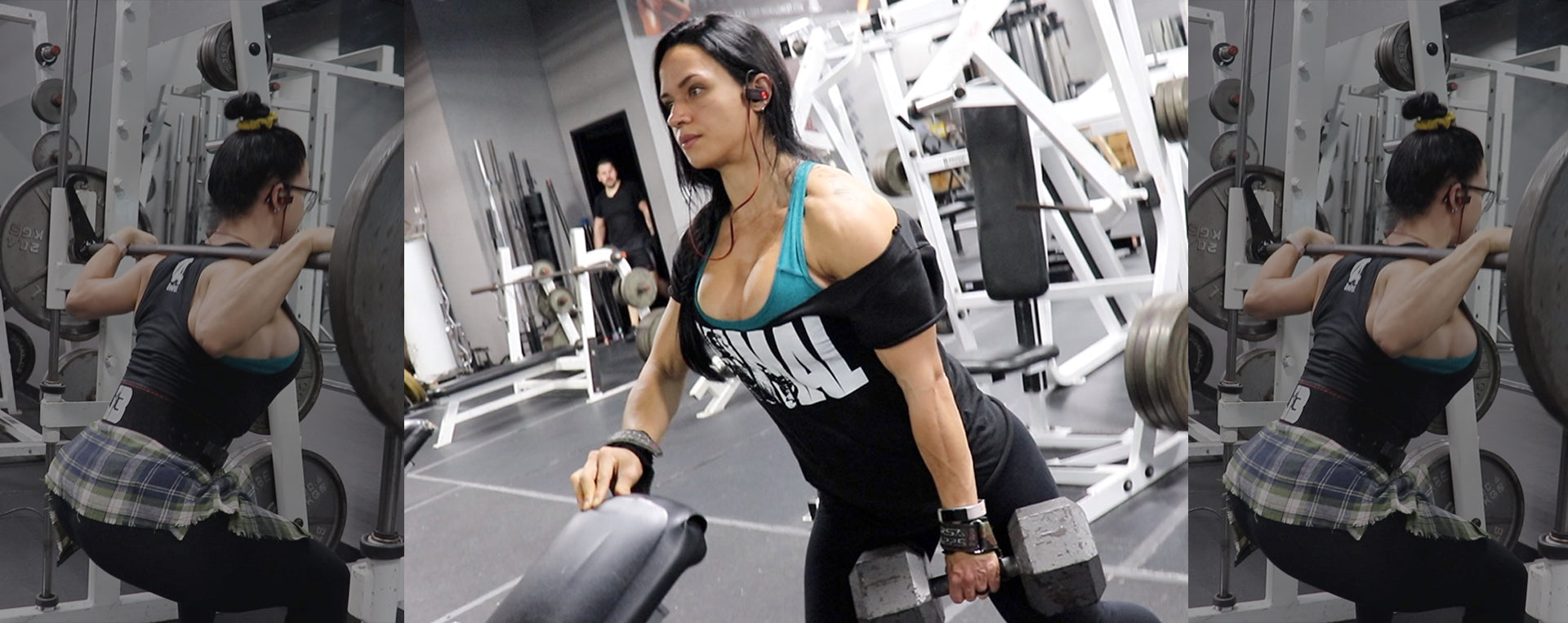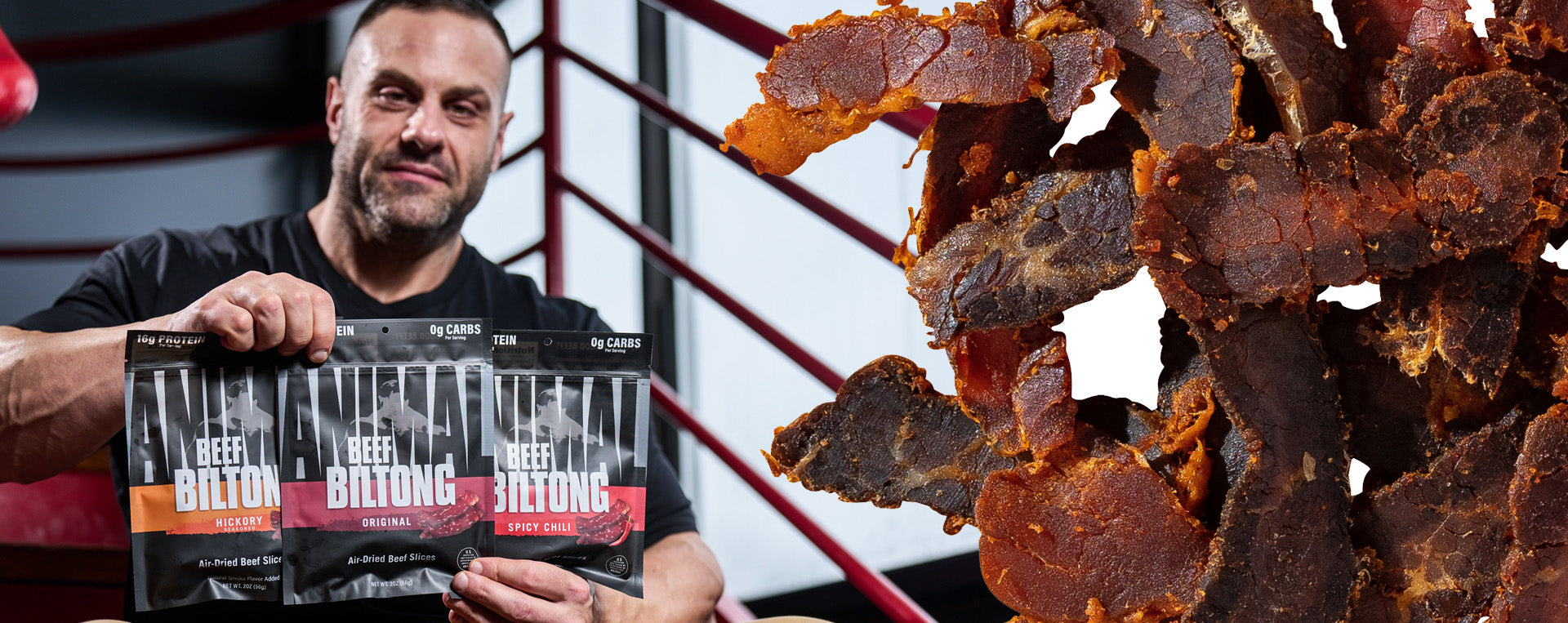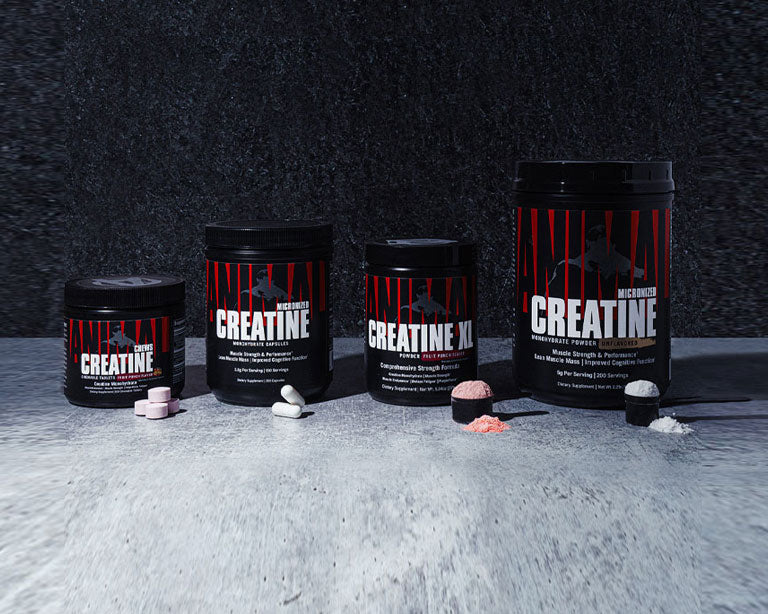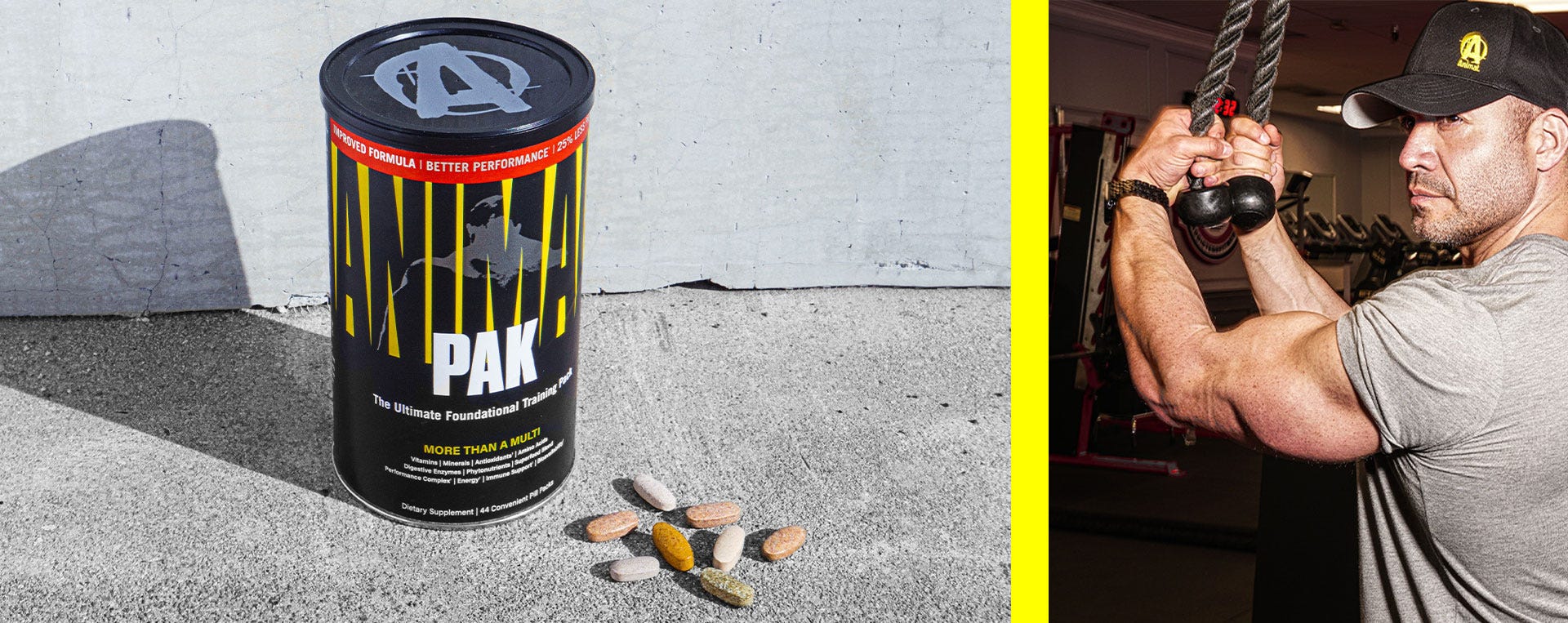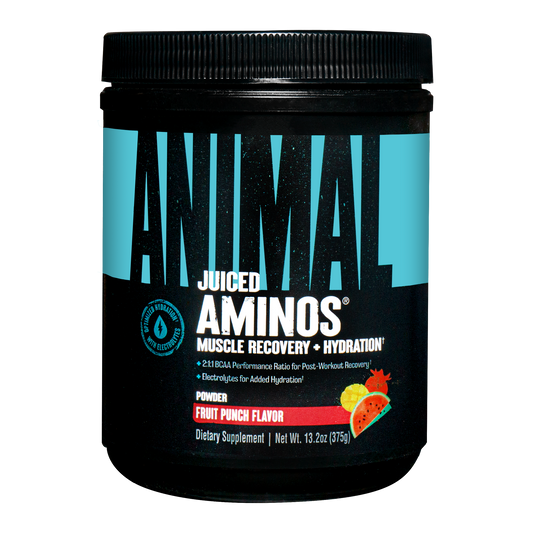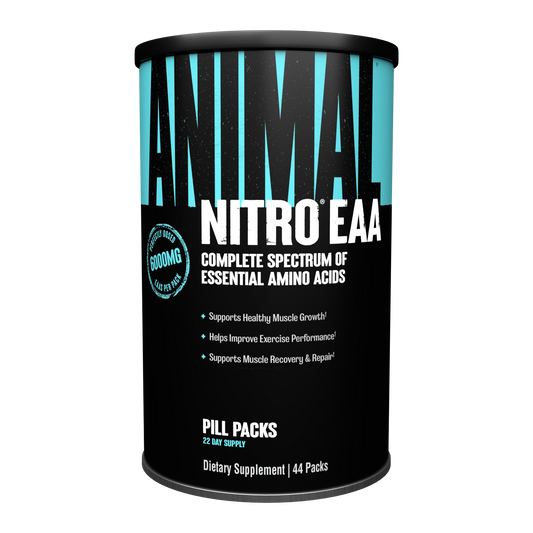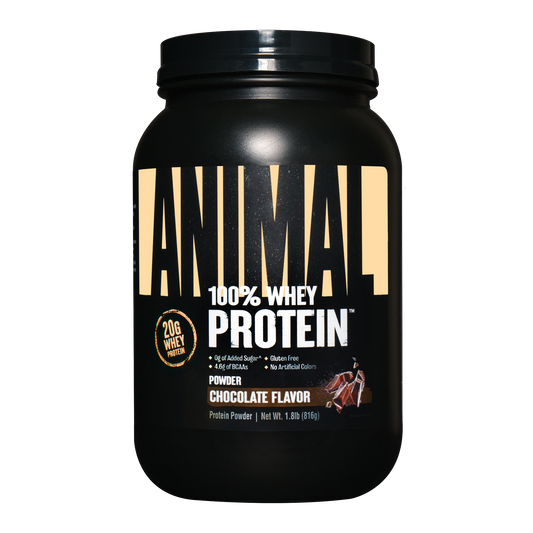Our supplement market is flooded with options when it comes to protein and amino acid choices. We have BCAAs and EAAs and can choose from several whole intake protein powders (whey, egg, pea, beef, etc.). So many options can have a bodybuilder scratching his head at what to pick. As a bodybuilder, I want to know which is best for my goal of building muscle mass and also make sure I don’t waste my hard-earned dollars. Today, let’s dig into the question of what we should take to build muscle mass.
Amino acids are the building blocks to skeletal muscle and several tissues in the body. Out of a total of 20 amino acids, 9 of them are essential amino acids (EAAs) and 11 are non-essential. Essential means that our bodies cannot produce them, so they must be consumed. Our bodies can synthesize non-essential amino acids from the EAAs if we have an inadequate intake. Among these 9 EAAs, leucine, isoleucine, and valine are branched-chain amino acids (BCAAs). Leucine is a popular amino as it has been shown to be a primary regulator in turning on protein synthesis pathways.
Our point in taking protein/amino acids in bodybuilding is to stimulate protein synthesis and decrease protein breakdown. This synthesis and breakdown of protein tissue is called protein turnover. We want to be in a net positive state, where synthesis exceeds breakdown, which means we are packing on the muscle mass gains.
In a fasted or post-workout state, we are in a catabolic state with higher protein breakdown and low protein synthesis. We want to reverse this situation and get a net positive protein balance. When we take the BCAAs alone, the three amino acids can raise protein synthesis up to 22% (1). However, this does not lead to net positive protein balance. BCAAs alone are limited by not containing all the remaining EAAs to maximally stimulate protein synthesis.
Think about actual muscle tissue—it is comprised of all 20 amino acids, not just the BCAAs. To create new tissue, you need all 20 amino acids present. If you take the three BCAAS, where do the remaining aminos come from? They come from the protein breakdown of muscle tissue. The remaining EAAs and non-essential aminos are pooled together to create some protein synthesis response, but this is inadequate in maximally stimulating protein synthesis and decrease protein breakdown. Even in the presence of adequate leucine, protein synthesis will not be maximized if the total EAAS are not adequate (2).
This has been tested in studies with subjects consuming 25g of whey vs 6.25g of whey + leucine vs 6.25g of whey + EAAs devoid of leucine. Both the leucine addition and EAA devoid leucine addition were as effective as whey at stimulating protein synthesis, but only the whey protein was able to sustain protein synthesis over time. Simply stated, even if you consume the same amount of leucine or EAAs that is in 25g of whey protein, it is still not optimal to maximize growth.
We have seen in other research that 20-40g of whey maximally stimulates muscle protein synthesis (3). You may potentially even need as high as a 70g dose of protein to decrease rates of muscle protein breakdown (4). We need all of the amino acids — EAAs and non-essential aminos — in order to maximize this process. We should aim to consume high-quality protein sources such as animal protein and whey.
A recent meta-analysis can give some further clarity. It compiled the data from 49 studies that investigated the muscle-building effects of supplementing with various forms of protein from whey, pea, eggs, and beef (5). The extra supplementation of protein increased muscle mass in subjects up until a threshold of total protein intake was met for the day. There was no further benefit in extra protein supplementation beyond a protein intake of 1.6g/kg of body weight.
The researchers still recommended a protein intake of 2.2g/kg of body weight per day of total high-quality protein sources to cover all bases though. So if total protein intake is met, extra EAAs and BCAAs are not providing any greater benefit to muscle gain than that of whole intact protein. The most important aspect in maximizing muscle growth is hitting your total protein intake for the day. The point of any supplement is exactly what the name implies. It is to supplement the diet. But taking a whey supplement is a practical way to ensure optimal protein intake for the day.
In most cases, your pre-workout meal is also serving as your intra-workout as well. Consuming a shake of 20g of whey protein immediately pre-workout can elevate blood amino acid levels by 130%, and those levels can remain elevated for 2 hours after the workout (6). A mixed meal (protein, carbs, and fats together) can elevate amino acid levels for up to 5-6 hours (7). A pre-workout meal containing 20-40g of high-quality protein 60-90 minutes prior to training will cover the intra-workout needs for most, and all you need to do during training is drink water. The caveat to this is if your last meal was over 3-4 hours before training or you have a workout that will last over an hour, you should use a supplement like whey or EAAs. BCAAs would not be useful as they are inadequate at maximizing net protein balance. Whole protein should be the first go-to, then EAAs as a next resort. Let’s cover some situations where an EAA or whey supplement can really shine:
The What and The Why of BCAAs and EAAs
Amino acids are the building blocks to skeletal muscle and several tissues in the body. Out of a total of 20 amino acids, 9 of them are essential amino acids (EAAs) and 11 are non-essential. Essential means that our bodies cannot produce them, so they must be consumed. Our bodies can synthesize non-essential amino acids from the EAAs if we have an inadequate intake. Among these 9 EAAs, leucine, isoleucine, and valine are branched-chain amino acids (BCAAs). Leucine is a popular amino as it has been shown to be a primary regulator in turning on protein synthesis pathways.
Our point in taking protein/amino acids in bodybuilding is to stimulate protein synthesis and decrease protein breakdown. This synthesis and breakdown of protein tissue is called protein turnover. We want to be in a net positive state, where synthesis exceeds breakdown, which means we are packing on the muscle mass gains.
Which Amino Acids Make You Grow?
In a fasted or post-workout state, we are in a catabolic state with higher protein breakdown and low protein synthesis. We want to reverse this situation and get a net positive protein balance. When we take the BCAAs alone, the three amino acids can raise protein synthesis up to 22% (1). However, this does not lead to net positive protein balance. BCAAs alone are limited by not containing all the remaining EAAs to maximally stimulate protein synthesis.
Think about actual muscle tissue—it is comprised of all 20 amino acids, not just the BCAAs. To create new tissue, you need all 20 amino acids present. If you take the three BCAAS, where do the remaining aminos come from? They come from the protein breakdown of muscle tissue. The remaining EAAs and non-essential aminos are pooled together to create some protein synthesis response, but this is inadequate in maximally stimulating protein synthesis and decrease protein breakdown. Even in the presence of adequate leucine, protein synthesis will not be maximized if the total EAAS are not adequate (2).
This has been tested in studies with subjects consuming 25g of whey vs 6.25g of whey + leucine vs 6.25g of whey + EAAs devoid of leucine. Both the leucine addition and EAA devoid leucine addition were as effective as whey at stimulating protein synthesis, but only the whey protein was able to sustain protein synthesis over time. Simply stated, even if you consume the same amount of leucine or EAAs that is in 25g of whey protein, it is still not optimal to maximize growth.
We have seen in other research that 20-40g of whey maximally stimulates muscle protein synthesis (3). You may potentially even need as high as a 70g dose of protein to decrease rates of muscle protein breakdown (4). We need all of the amino acids — EAAs and non-essential aminos — in order to maximize this process. We should aim to consume high-quality protein sources such as animal protein and whey.
Do You Need a Supplement?
A recent meta-analysis can give some further clarity. It compiled the data from 49 studies that investigated the muscle-building effects of supplementing with various forms of protein from whey, pea, eggs, and beef (5). The extra supplementation of protein increased muscle mass in subjects up until a threshold of total protein intake was met for the day. There was no further benefit in extra protein supplementation beyond a protein intake of 1.6g/kg of body weight.
The researchers still recommended a protein intake of 2.2g/kg of body weight per day of total high-quality protein sources to cover all bases though. So if total protein intake is met, extra EAAs and BCAAs are not providing any greater benefit to muscle gain than that of whole intact protein. The most important aspect in maximizing muscle growth is hitting your total protein intake for the day. The point of any supplement is exactly what the name implies. It is to supplement the diet. But taking a whey supplement is a practical way to ensure optimal protein intake for the day.
What About Amino Acids During Training?
In most cases, your pre-workout meal is also serving as your intra-workout as well. Consuming a shake of 20g of whey protein immediately pre-workout can elevate blood amino acid levels by 130%, and those levels can remain elevated for 2 hours after the workout (6). A mixed meal (protein, carbs, and fats together) can elevate amino acid levels for up to 5-6 hours (7). A pre-workout meal containing 20-40g of high-quality protein 60-90 minutes prior to training will cover the intra-workout needs for most, and all you need to do during training is drink water. The caveat to this is if your last meal was over 3-4 hours before training or you have a workout that will last over an hour, you should use a supplement like whey or EAAs. BCAAs would not be useful as they are inadequate at maximizing net protein balance. Whole protein should be the first go-to, then EAAs as a next resort. Let’s cover some situations where an EAA or whey supplement can really shine:
The Early Morning Lifter
This is the person that gets up and has no time for a meal. A shake may even sit too heavily on the stomach and cause nausea during training. In this instance, they could sip on a supplement of 10g of EAAs when they wake up and throughout their training. I would still encourage a whey protein, or a whey or casein hydrolysate as they have faster digestion kinetics than whole intact whey (8). A combination of carbohydrate and protein can also provide fuel during training and elicit recovery benefits (9).
The Marathon Lifter
This is the lifter who’s in the gym for 1.5-2+ hours. I would question why he trains that long in the first place, but I do know some high-level bodybuilders that do. In this instance, the marathon lifter might not consume protein for several hours. The application of 35g of carbohydrates and 10g EAAs during training can maintain a favorable hormone environment, limit excess muscle damage, and begin the recovery phase early upon completion of training (10).
The Dreamer Bulk Lifter
This is the lifter that needs an unheard-of amount of food. They spend all day eating and eating and eating. The intra-workout period is just another time to squeeze in a few more of their macronutrients for the day. This lifter is going to have an intra workout with 35g+ of carbohydrates and 10g EAAs or 20g of whey protein during training. The main goal here is to hit total macronutrient goals for the day.
The Workaholic Lifter
The is the lifter that is so busy at work that they can’t eat for several hours prior to training. They can only drink something while they’re on the way to the gym. They might be able to slam down a carbohydrate/protein mixture, but they could have a sensitive stomach like the early morning lifter. So they might need to stick with EAAs in their pre-workout drink. To make sure they hit protein goals for the day, they can bump up the EAAs to 20g and sip this drink while driving to the gym and continue drinking it during training.
BCAAs and EAAs — which are the key to muscle growth? Well, we need them all. The BCAAs only turn on the protein synthesis engine, but you need all amino acids, essential and non-essential, to keep that engine running maximally. Hitting your total protein target for the day is the main driver for positive protein balance. The total target should be a protein intake of 1g/lb of body weight, divided out into 4-6 servings evenly spaced throughout the day. If you can’t consume all your protein from whole food sources, a protein shake can supplement the diet. Make sure to time a serving of protein pre and post-workout and that will cover your intra-workout needs. If you can get in a whole protein source, the first supplement you can let go are EAAs.
References:
1. Jackman SR, Witard OC, Philp A, Wallis GA, Baar K, Tipton KD. Branched-Chain Amino Acid Ingestion Stimulates Muscle Myofibrillar Protein Synthesis following Resistance Exercise in Humans. Front Physiol. 2017 Jun 7;8:390. doi: 10.3389/fphys.2017.00390. PMID: 28638350; PMCID: PMC5461297.
2. Churchward-Venne TA, Burd NA, Mitchell CJ, West DW, Philp A, Marcotte GR, Baker SK, Baar K, Phillips SM. Supplementation of a suboptimal protein dose with leucine or essential amino acids: effects on myofibrillar protein synthesis at rest and following resistance exercise in men. J Physiol. 2012 Jun 1;590(11):2751-65. doi: 10.1113/jphysiol.2012.228833. Epub 2012 Mar 25. PMID: 22451437; PMCID: PMC3424729.
3. Macnaughton LS, Wardle SL, Witard OC, McGlory C, Hamilton DL, Jeromson S, Lawrence CE, Wallis GA, Tipton KD. The response of muscle protein synthesis following whole-body resistance exercise is greater following 40 g than 20 g of ingested whey protein. Physiol Rep. 2016 Aug;4(15):e12893. doi: 10.14814/phy2.12893. PMID: 27511985; PMCID: PMC4985555.
4. Kim IY, Schutzler S, Schrader A, Spencer HJ, Azhar G, Ferrando AA, et al. The anabolic response to a meal containing different amounts of protein is not limited by the maximal stimulation of protein synthesis in healthy young adults. Am J Physiol Endocrinol Metab. 2016;310:E73–80.
5. Morton RW, Murphy KT, McKellar SR, Schoenfeld BJ, Henselmans M, Helms E, Aragon AA, Devries MC, Banfield L, Krieger JW, Phillips SM. A systematic review, meta-analysis and meta-regression of the effect of protein supplementation on resistance training-induced gains in muscle mass and strength in healthy adults. Br J Sports Med. 2018 Mar;52(6):376-384. doi: 10.1136/bjsports-2017-097608. Epub 2017 Jul 11. Erratum in: Br J Sports Med. 2020 Oct;54(19):e7. PMID: 28698222; PMCID: PMC5867436.
6. Tipton KD, Elliott TA, Cree MG, Aarsland AA, Sanford AP, Wolfe RR: Stimulation of net muscle protein synthesis by whey protein ingestion before and after exercise. Am J Physiol Endocrinol Metab. 2007, 292 (1): E71-6.
7. Layman DK: Protein quantity and quality at levels above the RDA improves adult weight loss. J Am Coll Nutr. 2004, 23 (6 Suppl): 631S-6S.
8. Buckley JD, Thomson RL, Coates AM, Howe PR, Denichilo MO, Rowney MK. Supplementation with a whey protein hydrolysate enhances recovery of muscle force-generating capacity following eccentric exercise. J Sci Med Sport. 2010;13:178–181. doi: 10.1016/j.jsams.2008.06.007.
9. Tipton KD, Rasmussen BB, Miller SL, Wolf SE, Owens-Stovall SK, Petrini BE, et al. Timing of amino acid-carbohydrate ingestion alters anabolic response of muscle to resistance exercise. Am J Physiol Endocrinol Metab. 2001;281:E197–206.
10. Jäger R, Kerksick CM, Campbell BI, et al. International Society of Sports Nutrition Position Stand: protein and exercise. J Int Soc Sports Nutr. 2017;14:20. Published 2017 Jun 20. doi:10.1186/s12970-017-0177-8





